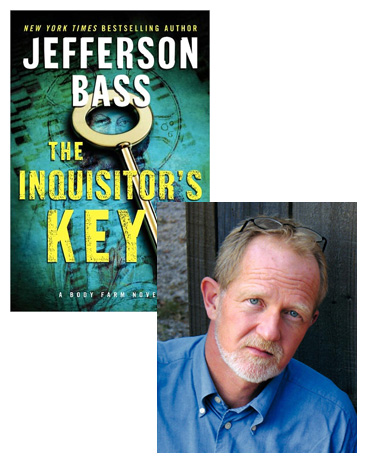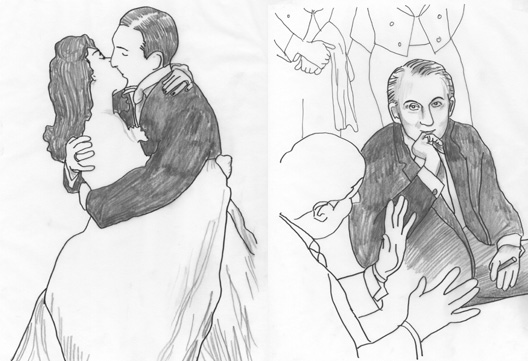Jefferson Bass: Forensic Science & a Religious Icon

Jefferson Bass is known for “his” crime thrillers centered around the Body Farm, an anthropology research facility where forensic techniques are used to unlock the secrets a corpse contains about… well, how it became a corpse. I say “his” because, in reality, the novels are co-written by Dr. Bill Bass, the founder of the real life Body Farm, and Jon Jefferson, a journalist and novelist. Their latest collaboration, The Inquisitor’s Key, is quite a change of pace—oh, there’s still plenty of forensic science, but this time it’s being used to determine whether an skeleton uncovered in a former papal estate might be Jesus. (Actually, some alternative theories come up early in the game, especially interesting if you know your 14th-century theological history…) Though the skeleton is fictional, the novel does connect it to a real religious relic—at the very least, “real” in the sense that, whatever you think about its origins or properties, it’s a thing that exists. And Jon Jefferson kindly elaborates on its role in the story…
I write forensic fiction—crime novels that revolve around high-tech forensic science (especially forensic anthropology—the stuff of the hit TV show Bones). While researching and writing The Inquisitor’s Key, which is set in Avignon, France—the home of the popes for most of the 14th century—I found myself peering through the lens of science at the world’s most famous religious relic: the Shroud of Turin. The Shroud is a 14-foot strip of ivory-colored linen imprinted with a faint, reddish-brown image that appears to be the bloodstained form of a crucified man. Revered by millions as the burial cloth of Jesus, the Shroud thickens the novel’s plot when it’s linked to a mysterious skeleton, one that our 21st-century anthropologists unearth in Avignon’s 14th-century Palace of the Popes.
The Shroud of Turin made its first indisputable appearance in 1357—not in Turin, Italy, but in Lirey, France, a town due north of Avignon. It’s Christendom’s most famous relic, but it’s far from the only one. The Middle Ages were the heyday of religious relics: artifacts (often human bones and body parts) intended to inspire devotion—and to draw pilgrims to the churches that possessed them. The relics trade was brisk and bogus-laden. A very incomplete list of medieval relics includes two heads of John the Baptist; three corpses of Mary Magdalene; six (count ’em, six) foreskins from the circumcised penis of the baby Jesus; vials of Jesus’s tears (and Mary’s breast milk!); 30 “holy nails” used in the crucifixion; and enough wood from the True Cross to build a small armada.
20 May 2012 | guest authors |
Andrew Goldstein: A Novel as Family Project

A while back, I mentioned Eric Orner’s art for his brother Peter’s novel, Love and Shame and Love. Recently, I saw a galley of Andrew Goldstein’s The Bookie’s Son, which also has drawings throughout the novel. In the acknowledgments, he mentions that these drawings are also a family affair, and I thought some of y’all might be interested in hearing about that, so I got in touch with his publicist and asked what he could tell us…
The other day, I was on the phone with a young woman at Book Baby and she said she loved the illustrations in The Bookie’s Son. She repeated this again later, which made me feel good since my daughter Lucy had drawn them. My original idea was to use real photos of my family even though the story is a fictional version of my childhood. I like the idea of mixing fact and fiction, memoir and novel, but at some point I chickened out. I decided that it might be too confusing for the reader, though I did use a real photo of my parents for the cover, which my son Max designed.
I use the illustrations at the beginning of each chapter. They are simple line drawings that were once more common in novels. The illustrations of people are based on family photos; there are also some drawings of physical objects and one racehorse. I debated the decision to use illustrations because one could argue that it is better for the reader to form their own impressions of what the main characters look like. I respect that perspective but in the end, for this novel, I decided the images added to the content.
19 May 2012 | guest authors |

 Our Endless and Proper Work is my new book with Belt Publishing about starting (and sticking to) a productive writing practice.
Our Endless and Proper Work is my new book with Belt Publishing about starting (and sticking to) a productive writing practice. 
